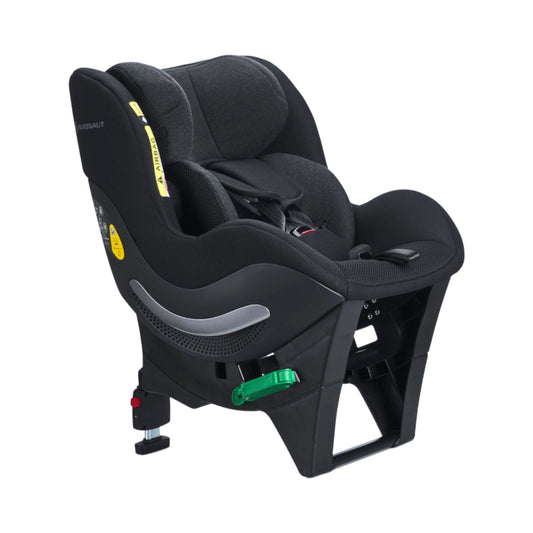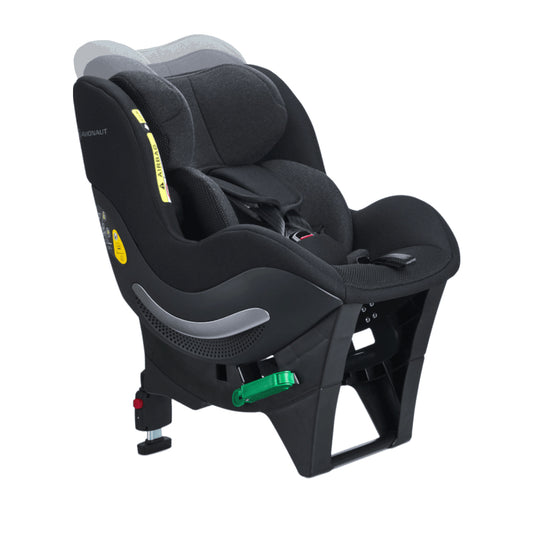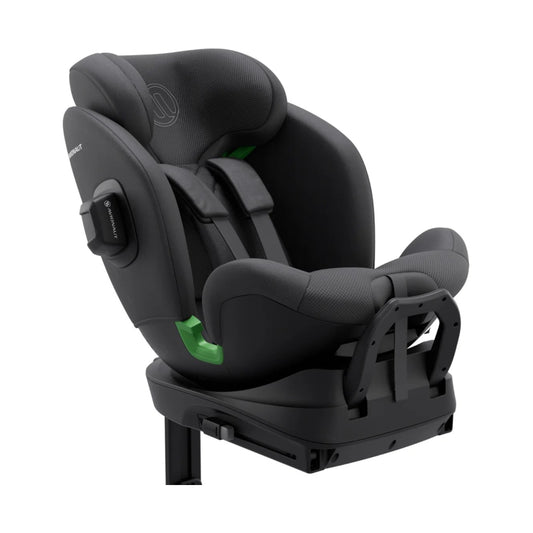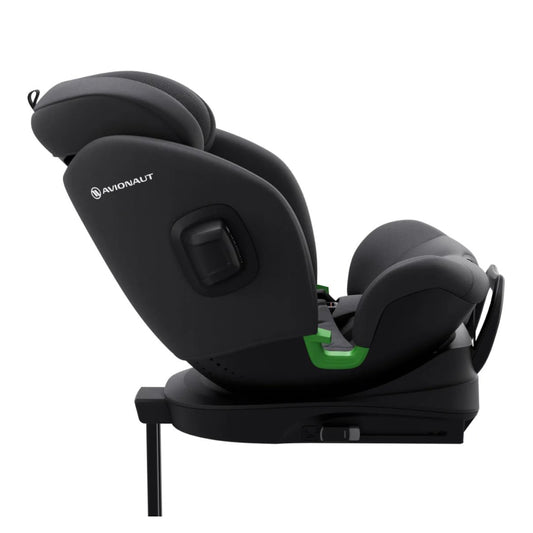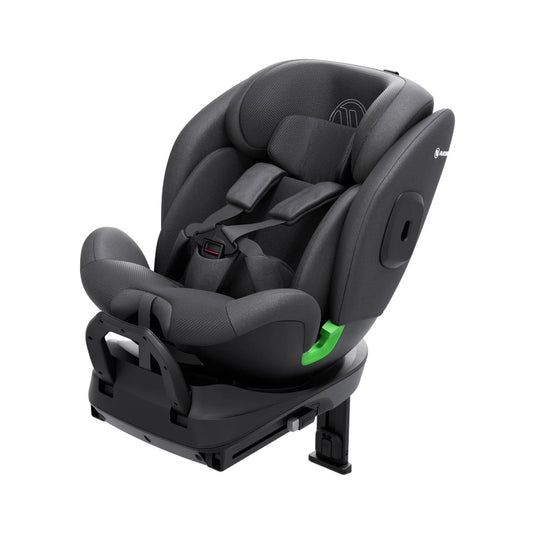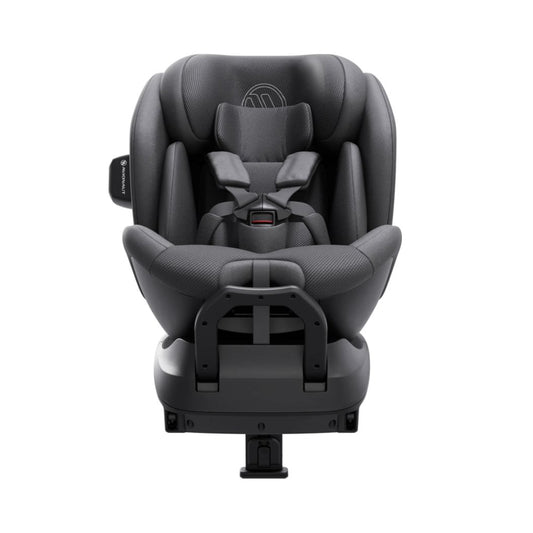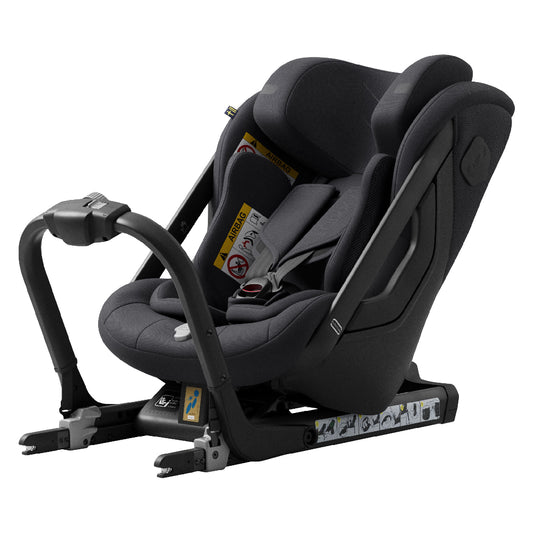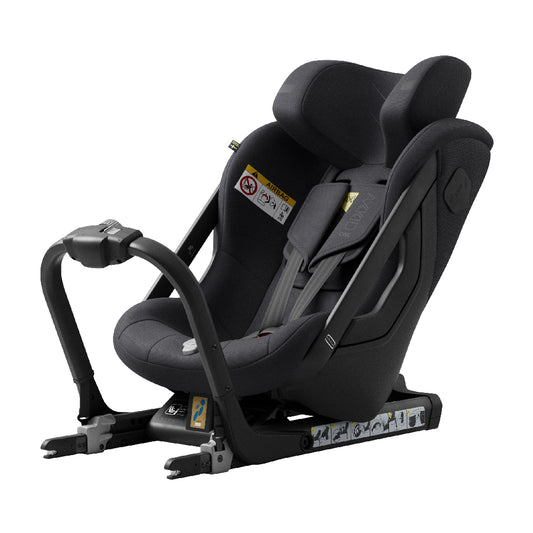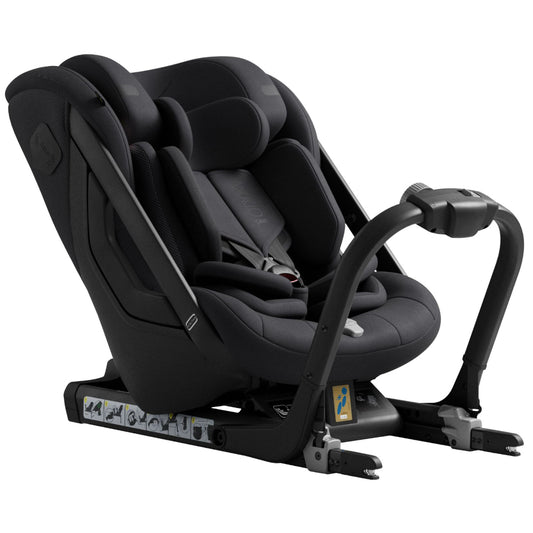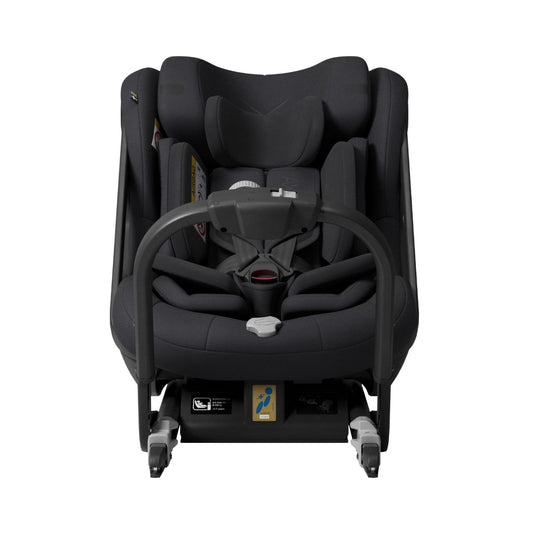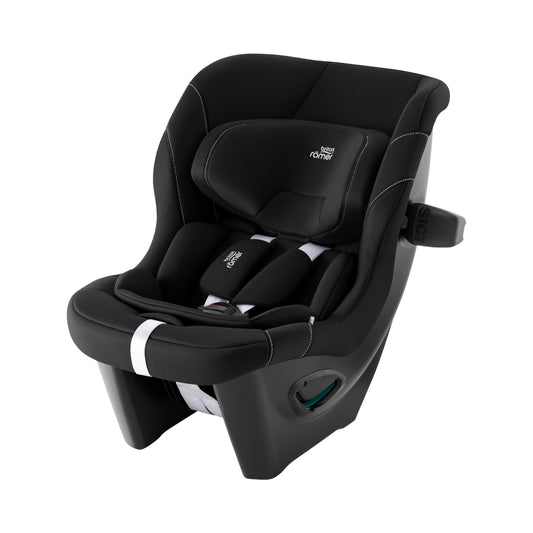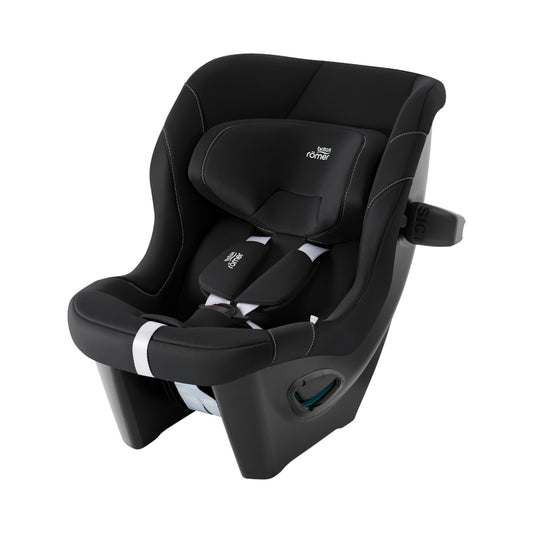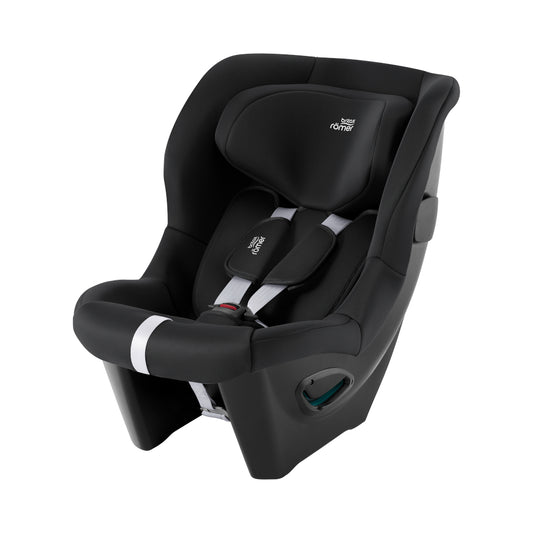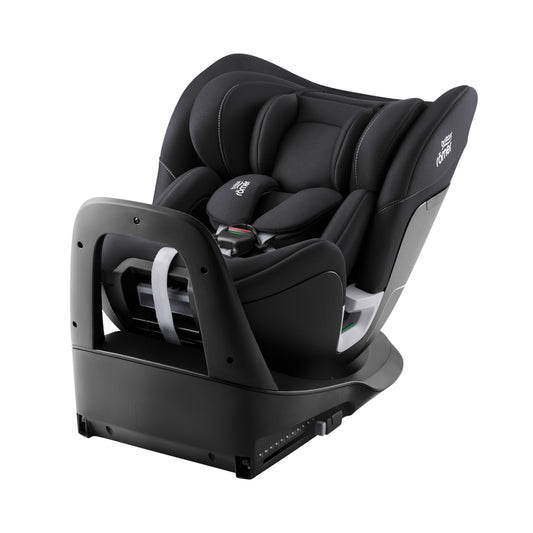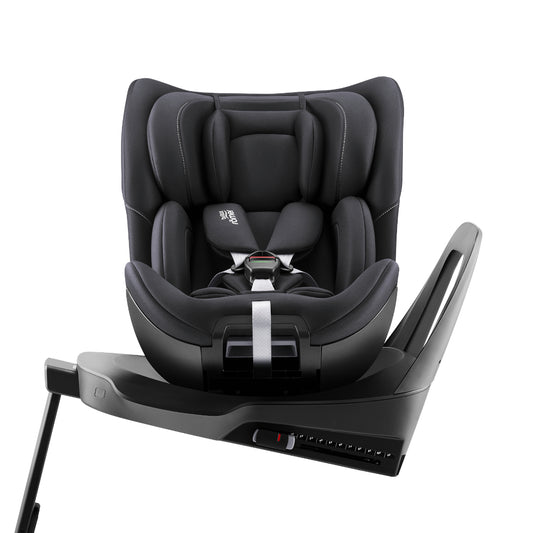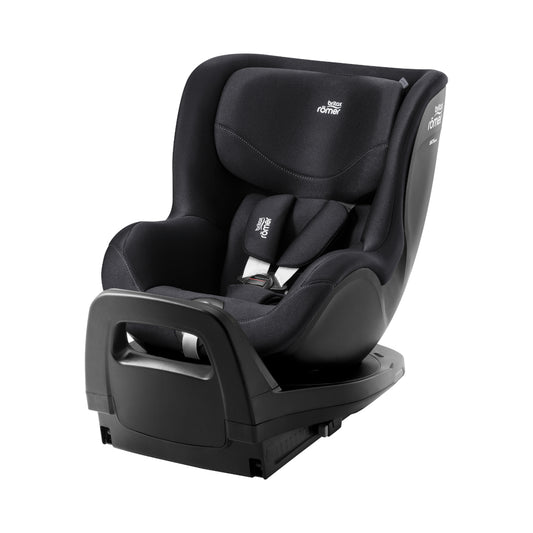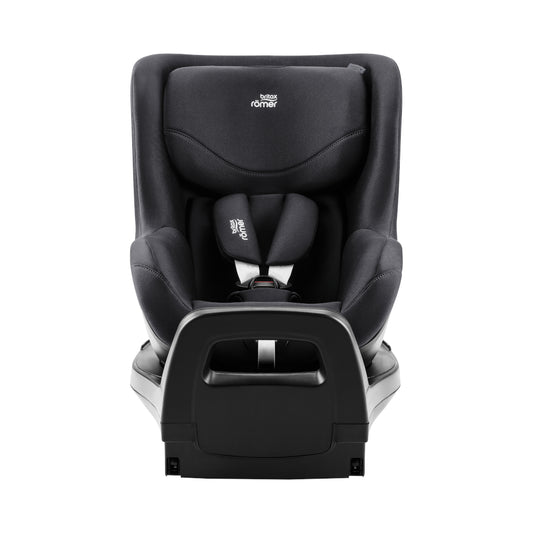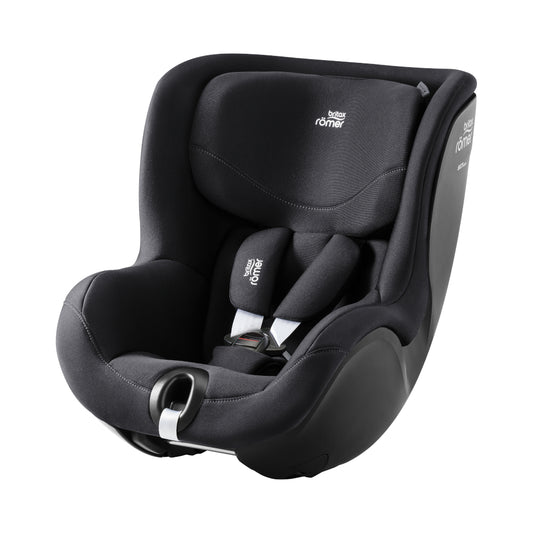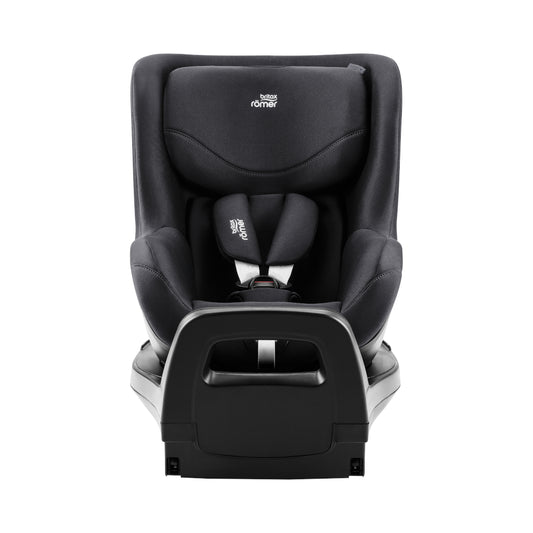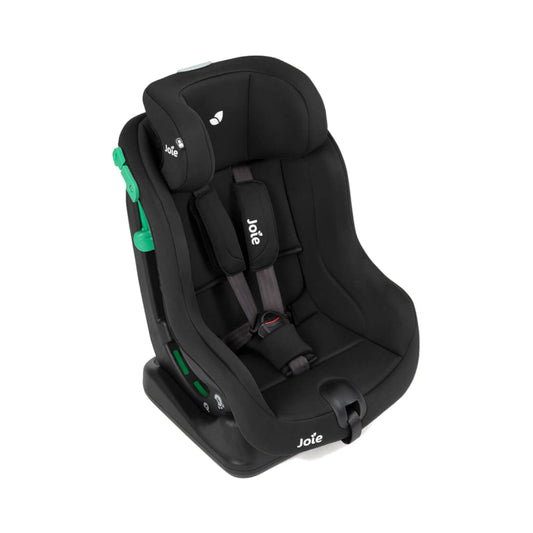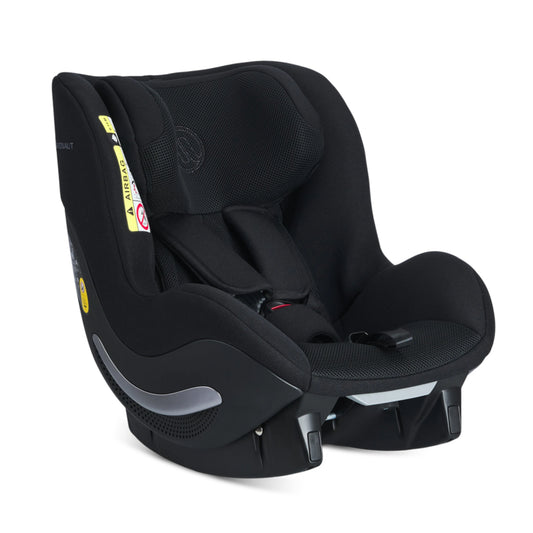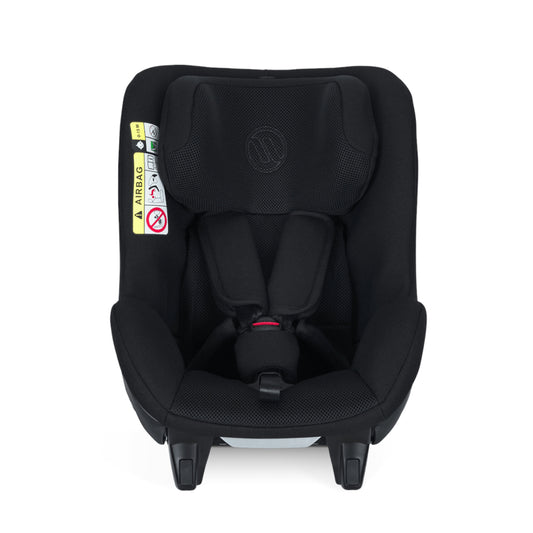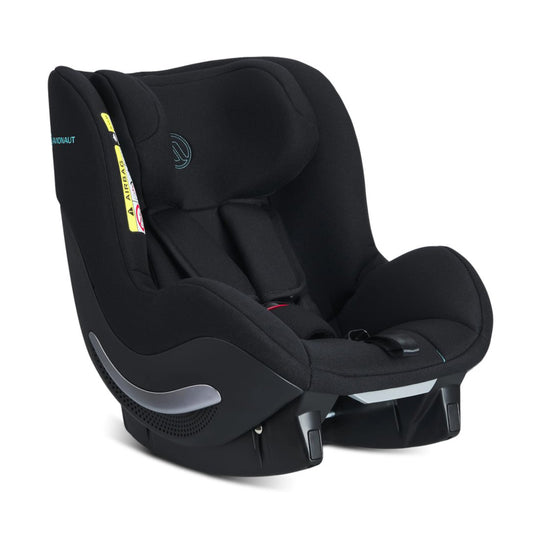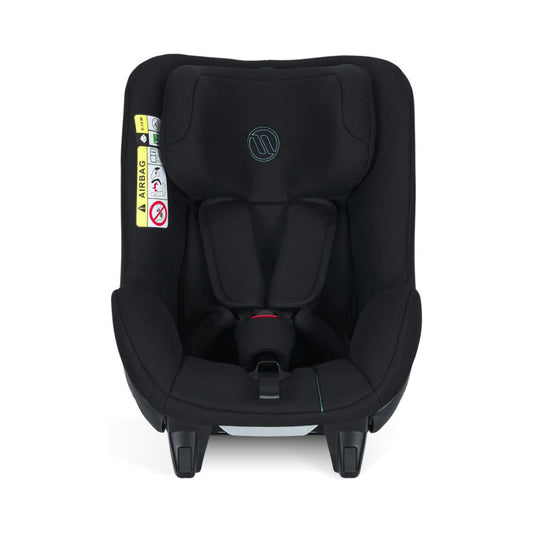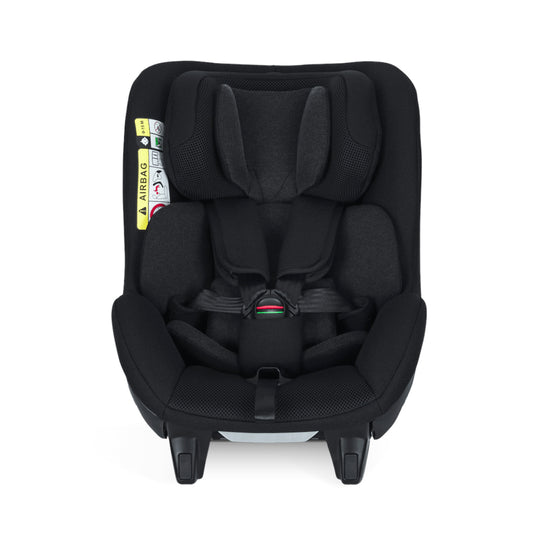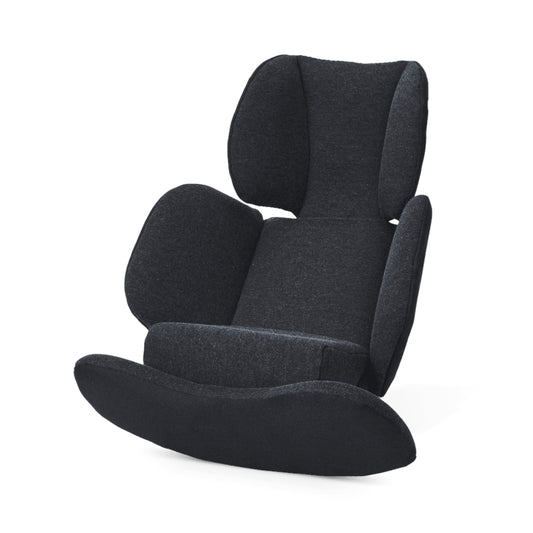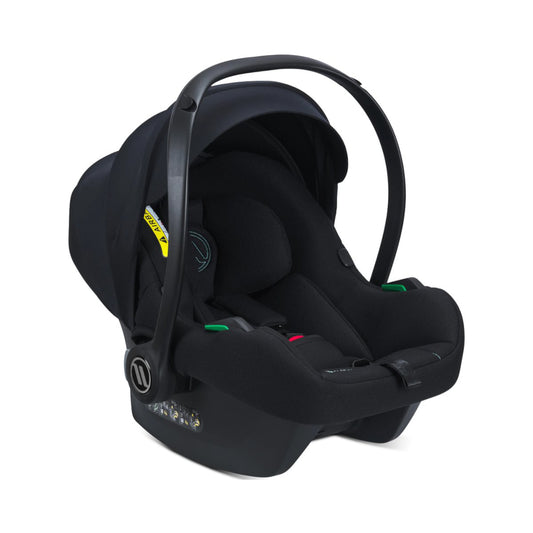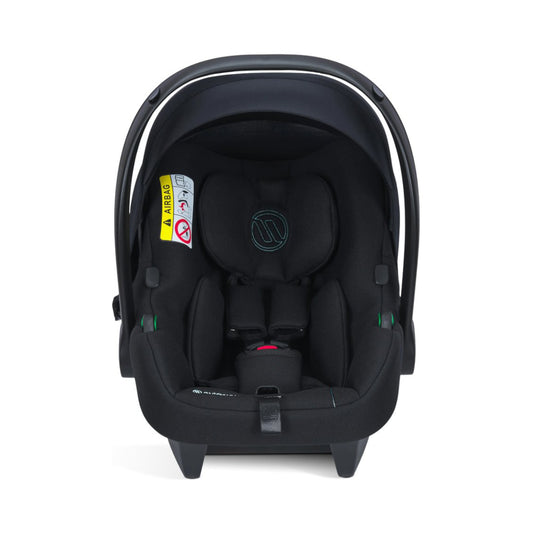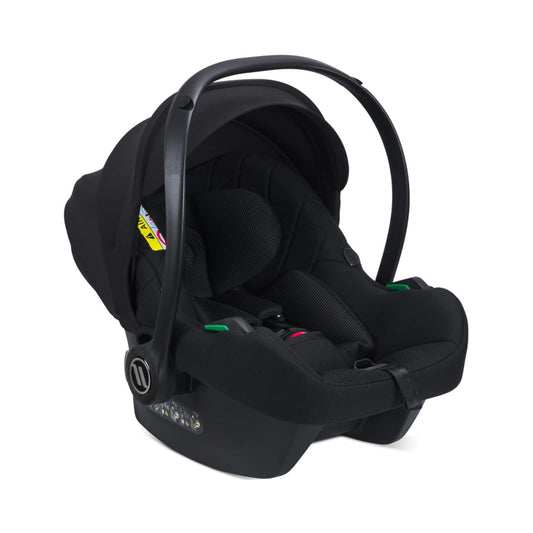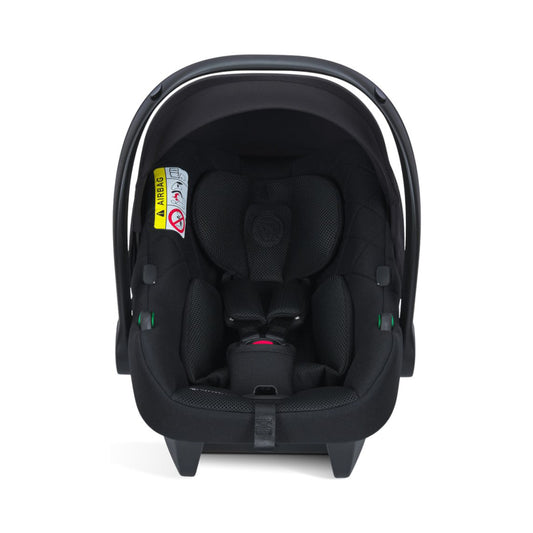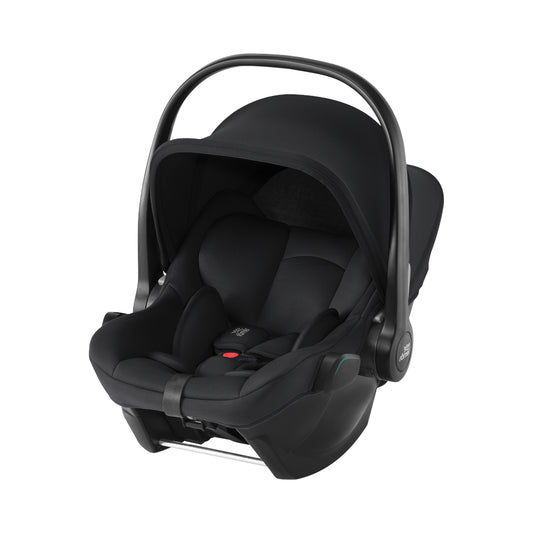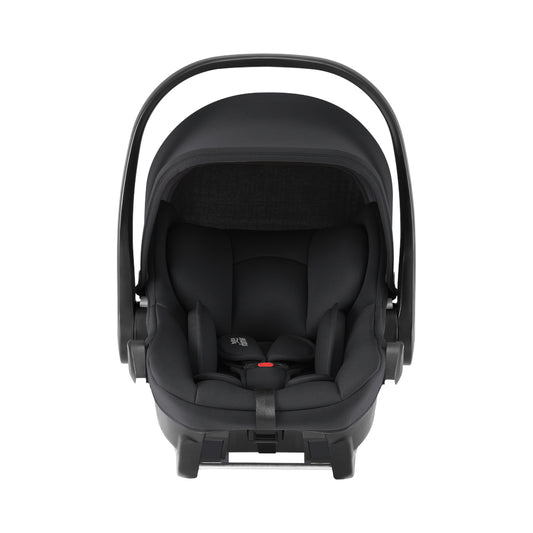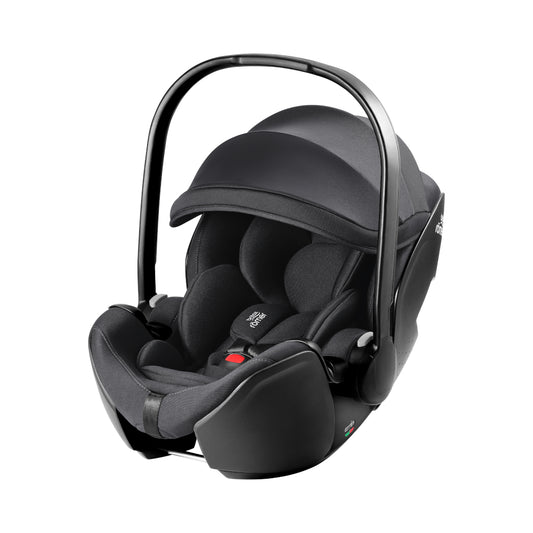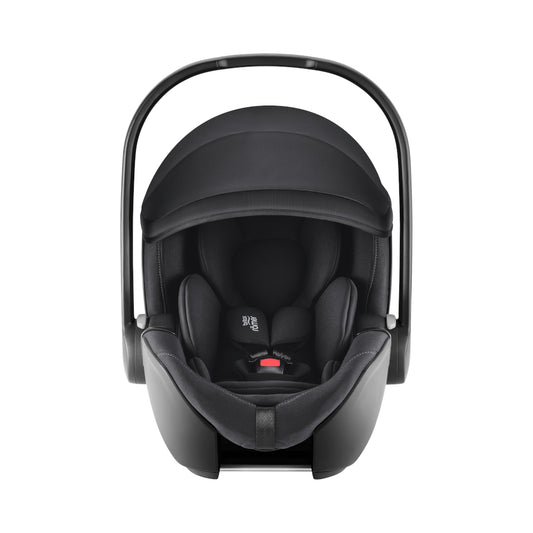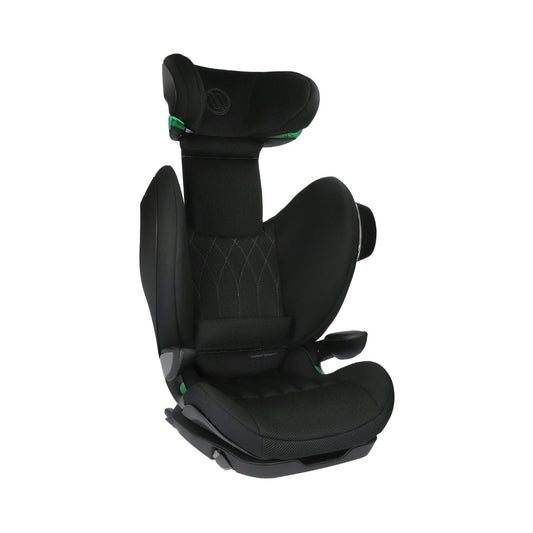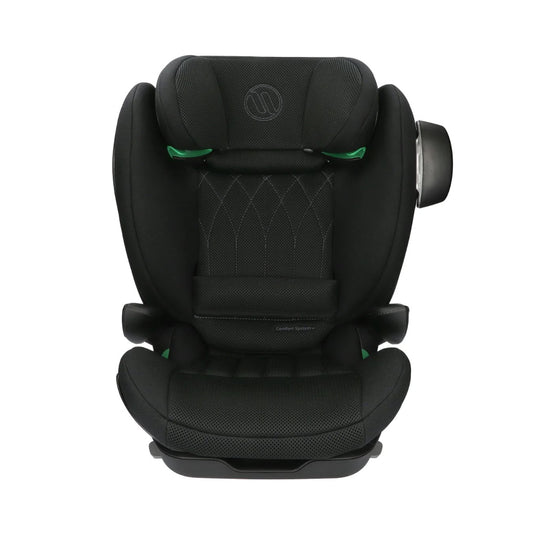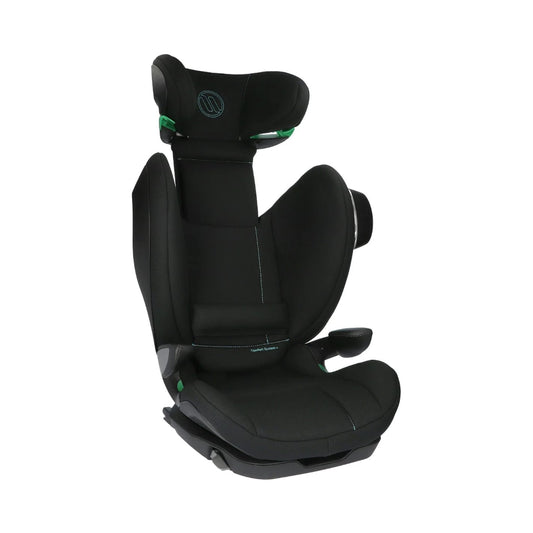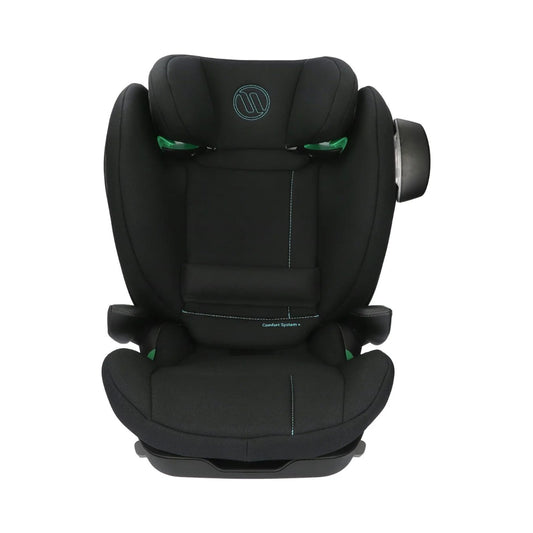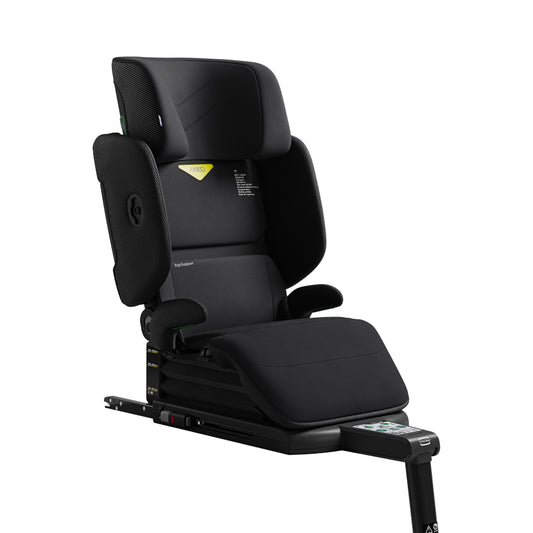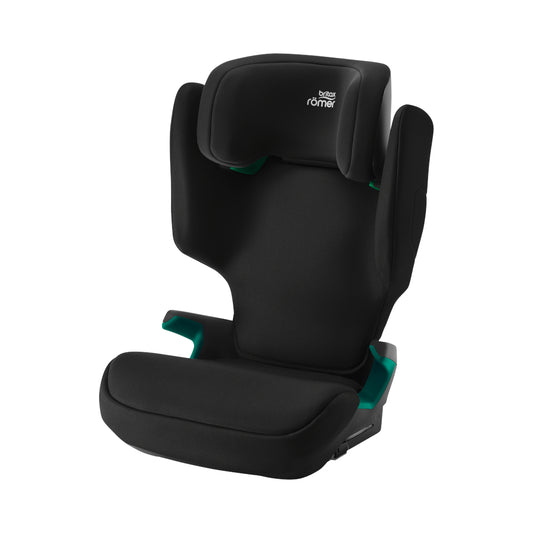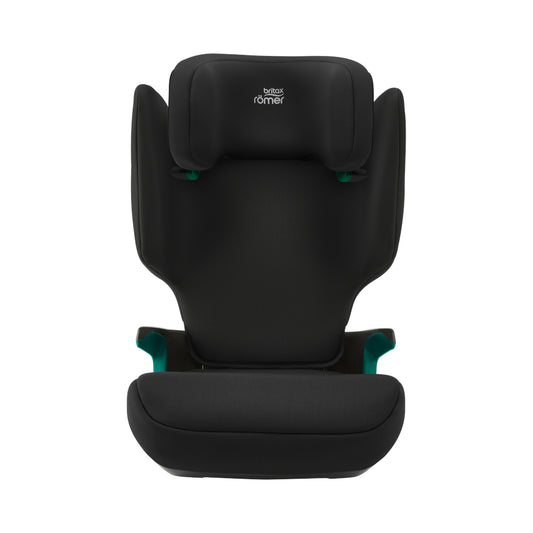
Black Friday 2025
This year's amazing reductions are all here in one place!
-
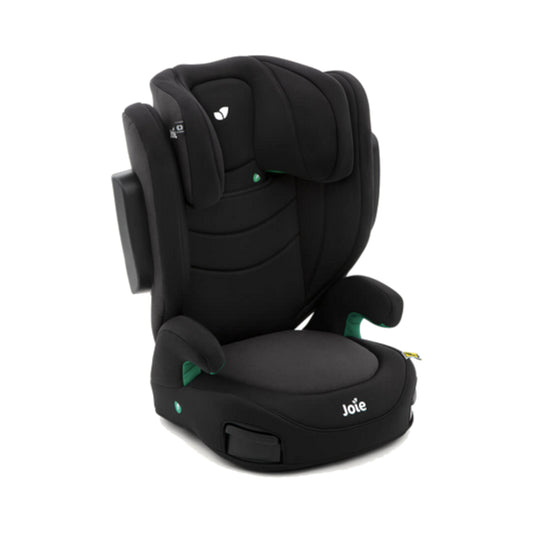
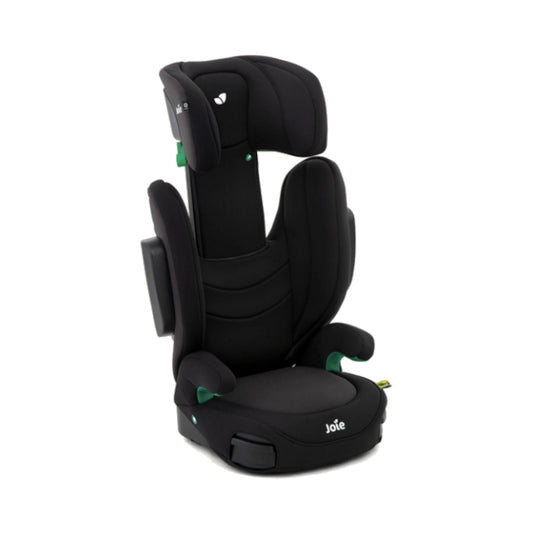 Sale
SaleJoie i-Trillo
Regular price £50.00Regular price£60.00Sale price £50.00Sale -
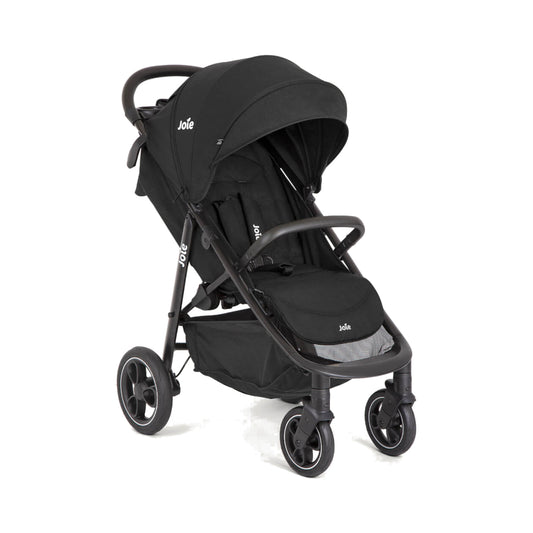
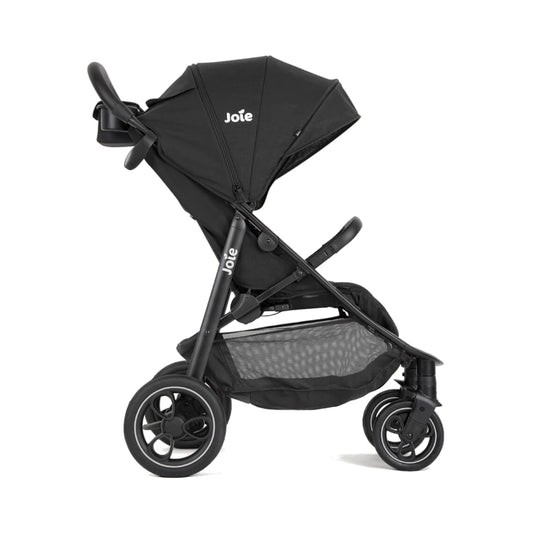 Sale
SaleJoie Literax Pro
Regular price £180.00Regular price£200.00Sale price £180.00Sale -
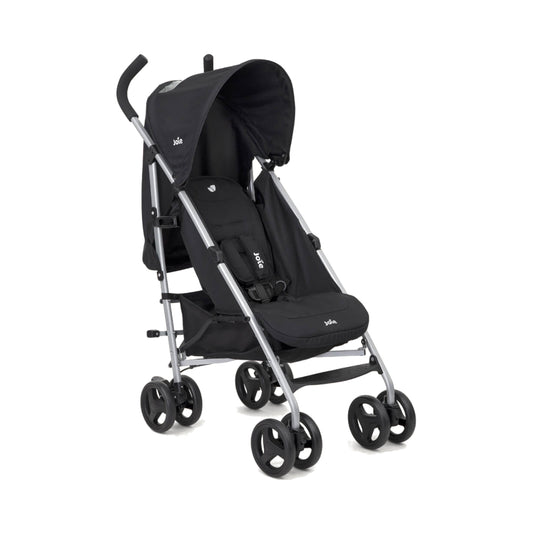
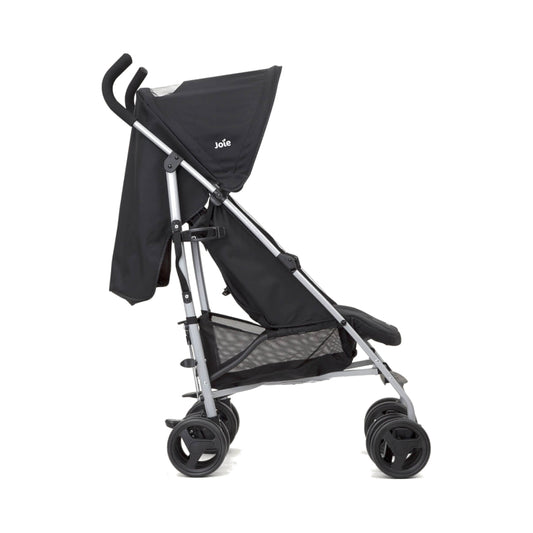 Sale
SaleJoie Nitro
Regular price £50.00Regular price£85.00Sale price £50.00Sale -

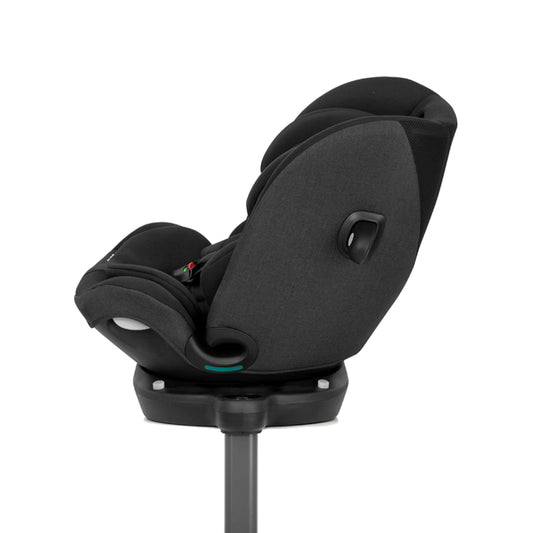 Sale
SaleJoie i-Pivot Grow
Regular price £225.00Regular price£275.00Sale price £225.00Sale -

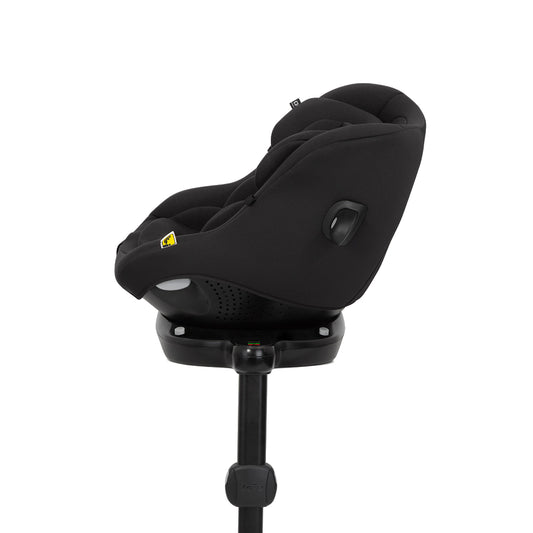 Sale
SaleJoie i-Pivot 360
Regular price £180.00Regular price£225.00Sale price £180.00Sale

Extended rear facing car seats up to 125cm (six or seven years)
-
Avionaut Sky AirFlow
Regular price £379.00Regular price -
Avionaut Stardust 360
Regular price £349.00Regular price -
Avionaut Stardust 360 from birth
Regular price £399.00Regular price -

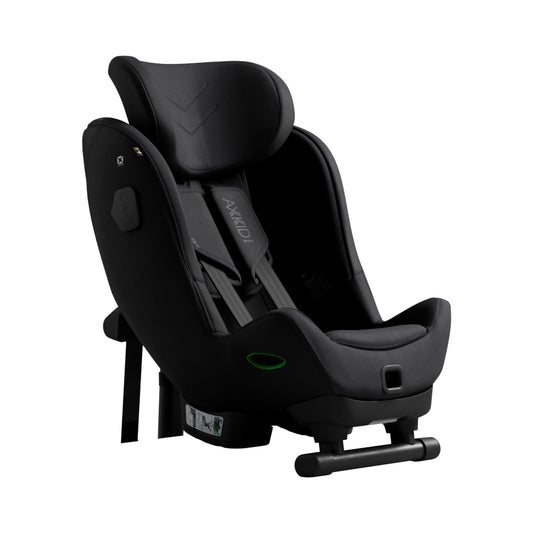 Sold out
Sold outAxkid Minikid 4 Max
Regular price £464.00Regular price -
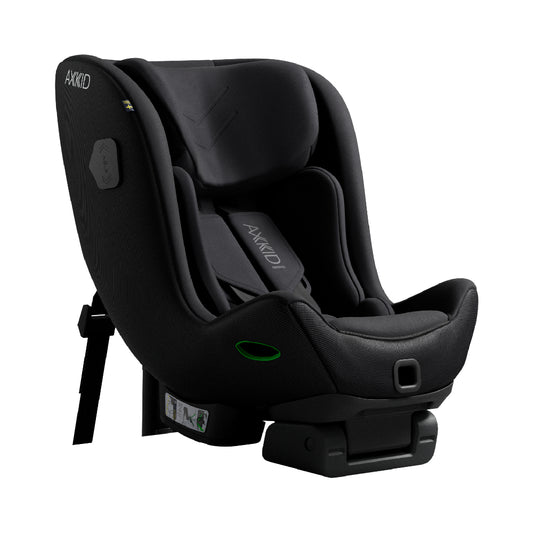
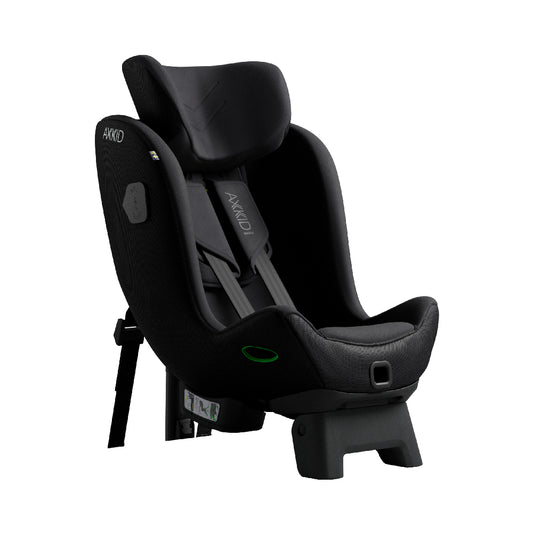 Sold out
Sold outAxkid Minikid 4 Pro
Regular price £394.00Regular price -
Axkid One 3
Regular price £649.00Regular price -
Axkid One+ 3
Regular price £724.00Regular price -
Britax-Römer Max-Safe Pro 2
Regular price From £279.00Regular price -
Britax-Römer Safe-Way M
Regular price £199.00Regular price -
Britax-Römer Swivel 2
Regular price £269.00Regular price
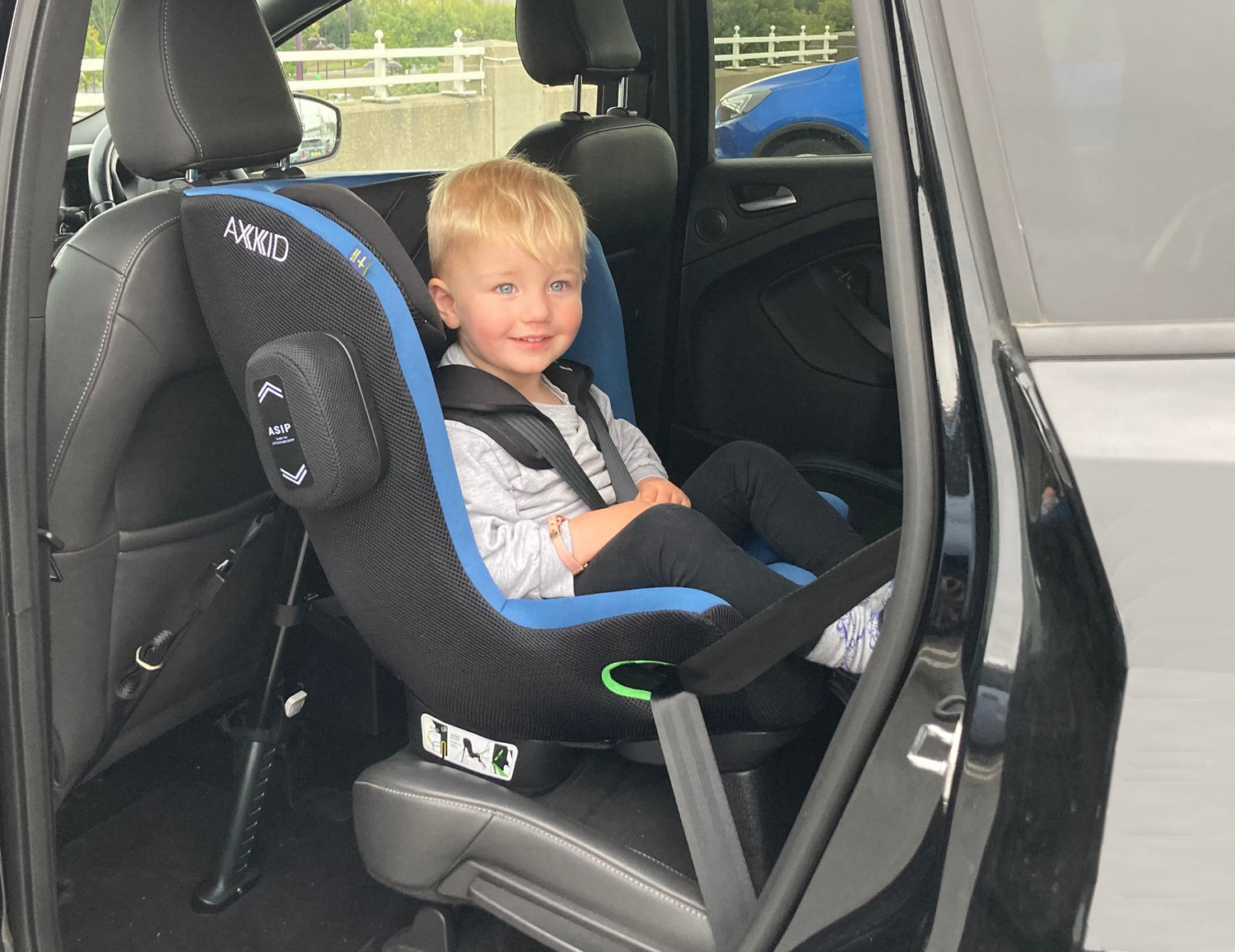
Why rear facing?
Young children's bodies are not strong enough to cope with the forces of a crash in a forward facing car seat. Keeping them rear facing until they are at least five years old protects the delicate head, neck and spine and greatly reduces their risk of being seriously injured in a collision.
We can help you choose every car seat that your child will need from birth to around twelve years.
Rear facing car seats up to 105cm (approx. four years)
-
Britax-Römer Dualfix Pro M
Regular price From £249.00Regular price -

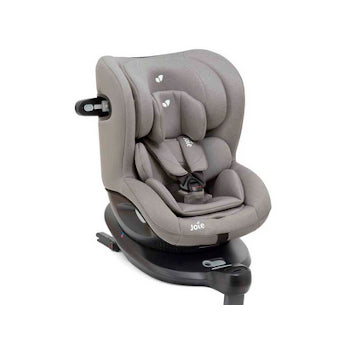 Sale
SaleJoie i-Spin 360
Regular price £200.00Regular price£250.00Sale price £200.00Sale -
Britax-Römer Dualfix 5Z i-Size (Seat only, requires separate base)
Regular price From £239.00Regular price -
Axkid Spinkid 2
Regular price £299.00Regular price -
Joie Steadi R129
Regular price £130.00Regular price -
Joie i-Spin XL
Regular price £300.00Regular price -

 Sale
SaleJoie i-Pivot 360
Regular price £180.00Regular price£225.00Sale price £180.00Sale -
Avionaut AeroFIX RWF AirFlow (Seat only, requires separate base)
Regular price £269.00Regular price -
Avionaut AeroFIX RWF Smart (Seat only, requires separate base)
Regular price £229.00Regular price -
Avionaut AeroFIX RWF AirFlow from birth (Seat only, requires separate base)
Regular price £309.00Regular price
1
/
of
18
Avionaut Sirius + Pixel Pro 2.0c + IQ Orbit Base Bundle
Regular price
£1,099.00
Regular price
Sale price
£1,099.00
Taxes included.
Quantity
Share















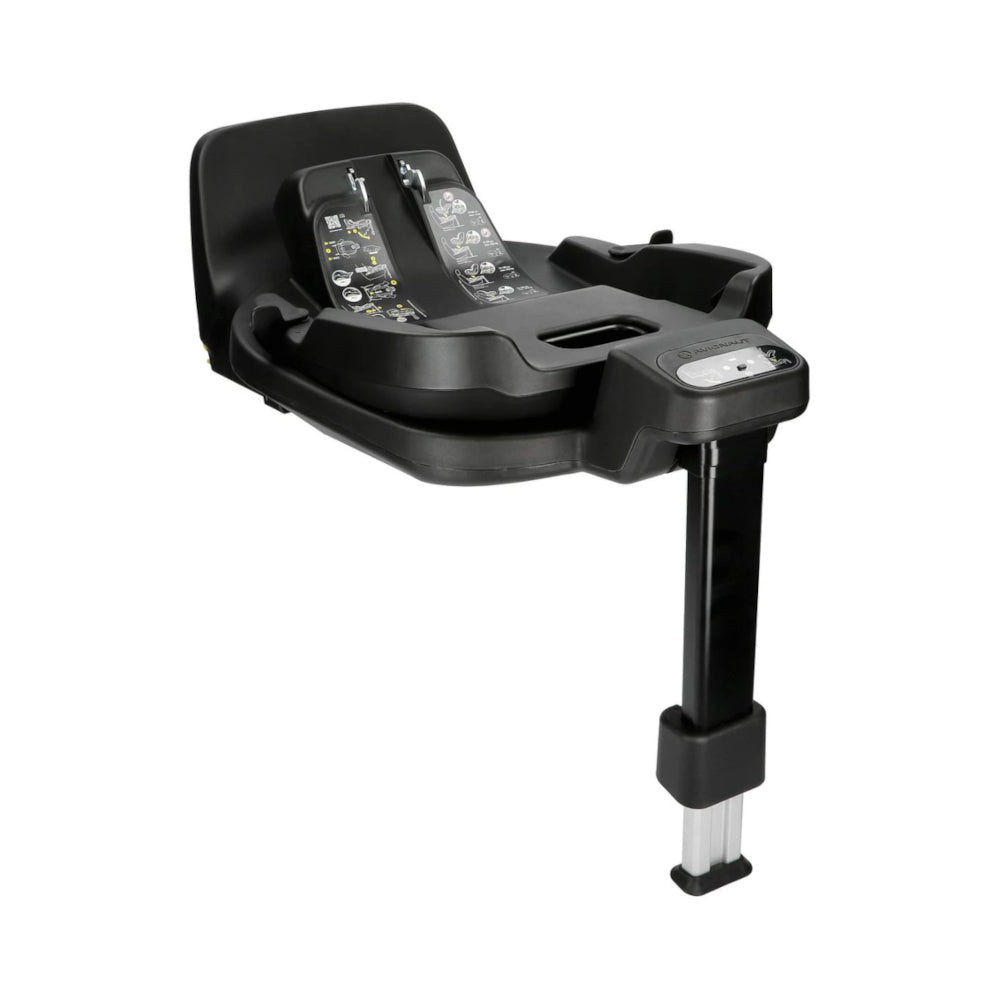
Infant carriers from birth to around 15 months
-
Avionaut Pixel PRO 2.0c
Regular price £239.00Regular price -
Avionaut Cosmo Smart
Regular price £139.00Regular price -
Avionaut Cosmo AirFlow
Regular price £189.00Regular price -
Britax-Römer Baby-Safe Core
Regular price £139.00Regular price -
Britax-Römer Baby-Safe Pro
Regular price From £229.00Regular price

Car seats for children from birth to twelve years
High back boosters up to 150cm (approx. twelve years)
-
Avionaut MaxSpace AirFlow
Regular price £249.00Regular price -
Avionaut MaxSpace Smart
Regular price £199.00Regular price -
Axkid Nextkid
Regular price £199.00Regular price -
Britax-Römer Discovery Plus 2
Regular price £139.00Regular price
Car seat information
Choosing the right car seat
How do you decide which car seat is right for you?
The choice can be quite overwhelming and it can be difficult to know which seat to choose. Do you buy one that fits onto your pushchair? Should it go on a base? Do you buy a bigger seat that will last longer? Should it be belt fitted or ISOfix? And when will the baby need a bigger seat? Rear or forward facing? What about booster seats?
The information on this website explains which types of car seats are available, and will hopefully make it easier for you to know what to look for. Which car seat is best for you will depend on your child's age, weight and height, the height of the driver and front passenger, whether you have other children or adult passengers, as well as your budget and of course your car.
Your baby's first car seat
Most babies' first car seat is a small seat known as an infant carrier. These seats go up to 13kg or 75-87cm. One of the advantages of an infant carrier is that you can carry the baby to and from the car in the car seat. Most of them can be used on a pushchair chassis and a lot of brands use the same adapters, so you can often mix and match your favourite car seat with your favourite pushchair.
Infant carriers can be installed in the car with the seat belt or on a separate ISOfix (or belt fitted) base. Having a base is very convenient, as it stays in the car and the seat can be clicked in and out of it in seconds. You will probably also find that your baby can use the seat for a few months longer on a base, because when you install the car seat with the seat belt, the lap belt goes over the baby's legs and some older babies find that annoying.
There are a few infant car seats that come with a base and cannot be installed without it, but for most seats the base is an optional extra. You may decide that you don't mind installing the seat with the seat belt every time, and don't want the extra expense of a base. Or occasionally the base may not be compatible with your car. Installing an infant car seat with the seat belt is quick and easy, and just as safe as using it on a base.
Another option is to buy a car seat that is suitable from birth to 18kg or 105cm, which will last for about four years. These stay in the car and can't be carried or used on a pushchair. And there are currently four car seats available in the UK that rear face from birth all the way up to 125cm.
Bigger car seats for older children

Car seats for older children come in two weight/height limits and will last up to either four or six years on average. A seat with a 125cm limit will last two or three years longer than one that goes up to 105cm.
You can't predict how heavy your baby will be before they're born, but by the time they need a new car seat at around 15 months, you will know if they're big or small for their age. The average age at which a child reaches 18kg or 105cm is four and a half to five, but all children are different and some can be as young as two, others as old as six. For those on the higher percentiles it's particularly important to get a car seat that rear faces up to 125cm, because they will outgrow a 105cm seat before they're four years old and that is not old enough to move up to the next stage. We encourage everyone to keep their children rear facing until they reach 125cm.
But that doesn't mean that we don't recommend car seats up to 18kg/105cm. Extended rear facing seats that go up to about four years are often the only option for a second child if the first is already in a 125cm seat behind the front passenger seat, and a second large seat won't fit behind the driver. Or some people choose to buy an 105cm seat when their first child is one, knowing that they will eventually buy them a bigger seat when a future sibling needs the smaller one. If the car is small and the parents are very tall a seat up to 105cm may be the only one that fits. And for people who don't own a car but need a seat for taxi rides and lifts with friends and relatives, a lightweight belt fitted seat up to 18kg/105cm is the most practical option.

If you choose an infant carrier as the first car seat, you will need to buy a bigger one when your baby is roughly 12-18 months old. There are lots of different types available. Most now rear face up to at least 105cm, but there are still a few available that face forward from 76cm and 15 months.
We don't recommend using a forward facing car seat under the age of five, because in the event of an accident a forward facing child is five times more likely to be seriously injured than a rear facing one. Therefore we encourage all parents to keep their children rear facing until they are at least five years old, preferably longer.
Seat belt or ISOfix?

A correctly installed belt fitted rear facing seat is no less safe than an ISOfix one, but ISOfix seats are quicker to install. This may be a factor if you are using the seat in more than one car and need to move it regularly. Most ISOfix car seats up to 105cm swivel towards the door which can be useful when strapping the baby in.
ISOfix has an overall seat + child limit of 33kg, so the lighter the seat, the higher the child limit. The lightest seats that are available weigh 10kg, which gives them a 23kg weight limit. These are fine for children who are evenly proportioned or tall and slim. But if your child is heavy for their height, and likely to reach an ISOfix seat's weight limit before they've reached the height limit, you're better off with a belt fitted seat up to 36kg.
At around 15kg ISOfix seats are quite heavy, and if you need to move the seat often you may want to consider one with a separate ISOfix base. The seat and the base only weigh 7 or 8kg each and are easier to carry than an all-in-one seat. Belt fitted seats up to 105cm/18kg don't weigh more than 9kg.
If you are using two or more cars and not all of them have ISOfix points, you will have to choose a belt fitted car seat that can be used in every car. ISOfix is nice, but just because your car has it doesn't mean you have to use it, and in some circumstances a belt fitted seat is a better choice. Belt fitted seats up to 18kg can be a lot cheaper than ISOfix ones.
High back booster seats

Once the weight or height limit of your child's harnessed car seat has been reached it is time for a high back booster. These belt positioning seats can be used from 100cm or 15kg, but as there are harnessed seats that can rear face up to 125cm or 36kg, it is safer to delay using a high back booster for as long as possible.
A booster has three jobs. It needs to lift the child up so that the lap belt lies on the hips and not on the soft abdomen, it needs to position the diagonal belt correctly across the chest and shoulder, and the backrest needs to keep the child upright, even when they're asleep.
A child must be AT LEAST five years old before going into a high back booster, even if they reach 15kg or 100cm sooner. Before the age of five they are not physically mature enough for the adult seat belt to protect them in a crash, and not mentally mature enough to sit still for the entire journey and not play with the seat belt.
If you have ISOfix points in your car, choose a booster seat that can be connected to them. Some boosters have straps with hooks and others have rigid arms. Booster seats that are connected to the car's ISOfix points are more stable in the car and you won't have to remember to strap them in when the child is not with you. If your car doesn't have ISOfix or the seat has to go in the middle seat which usually don't have ISOfix points, the booster's ISOfix arms can be stowed away inside the seat.
Convertible Car Seats
There are a few car seats that start off as a rear facing seat and can be converted into a high back booster (from 100-150cm or 15-36kg) later on. This may seem like a good idea, these seats are usualy advertised as being suitable from birth to 12 years so they can be used for a long time. But most of these seats have a rear facing harness limit of just 105cm and the product descriptions don't always make that clear. It is much better to rear face up to 125cm and then buy a high back booster when the rear facing seat is outgrown.
However, these combination seats can be useful for a second child when the older sibling is already in a bigger rear facing seat. The younger child can then rear face in a convertible seat until both children are ready to move up and then they can simply swap seats, so that the youngest can continue to rear face and the convertible seat can be used as a booster for the older child.
The law
All children must travel in the car in an appropriate car seat until they are either 12 years old or 135cm tall*

It is the driver's legal responsibility to ensure that all children under the age of 14 are correctly restrained in their car, even if the child's parents are passengers in the same car. For adults and children aged 14 and over it is their own responsibility to make sure they wear the seat belt.
Exception to the law for under-threes
Babies and toddlers under the age of three must travel in an appropriate car seat in any private vehicle, whether it's your own or someone else's. The only exception for under-threes is that they can legally travel on an adult's lap in a taxi. You must wear the seat belt and hold the child in your arms, never put the seat belt around both of you. Try to use a car seat whenever possible.

Exceptions to the law for children over three
For children aged between three and 12 there are four exceptions to the law, which mean that in any of these four circumstances a child over three is legally permitted to travel in the car without a car seat.
1. Travel in a taxi or Uber
It is not always possible to carry a car seat with you when you get a taxi. And as much as I would love to tell you never to get into a cab with your child, I know that sometimes you just don't have a choice. There are several belt fitted car seats available that are light enough to carry, so if at all possible try to use one of those. If you do travel in a taxi with young children and aren't able to use a car seat, then children aged three and over must use the adult seat belt, you are not allowed to carry them on your lap.
2. When there are two occupied child seats in the car and a third won't fit
Some cars are wide enough for three car seats, but in a lot of cars when there are child seats fitted on the two outer seats, a third one simply won't fit in the middle. If you cannot fit three car seats in your car and the front seat is occupied, you are allowed to put the biggest child in the middle in the adult seat belt. But only when all three children are in the car and the other two seats are being used. If you drive somewhere with only one or two of the three children, then the child who normally sits in the middle without a car seat must use one of the empty seats, or one of them must be removed and replaced with one suitable for that child. A child must never sit in the back next to an empty car seat, no matter how short the journey.
This scenario is far from ideal and if at all possible one of the children should go in the front seat in an appropriate car seat, and the second adult in the back with the other two.
3. When there are no seat belts fitted in the back of the car
Before the 1990's cars didn't have seat belts fitted in the back. If you own a very old car that doesn't have seat belts, your children are legally allowed to travel unrestrained in the back.
4. Short journeys of unexpected necessity in someone else's car
This exception to the law causes the most confusion and makes some people think that it's ok not to use a car seat in certain situations. I have come across several people without a car seat who say, 'Oh it's ok, it's not my car' or 'I only live around the corner, you don't need a car seat for short journeys'. They have misunderstood this exception.
ALL three points in this sentence must apply at the same time. It has to be a short journey AND it has to be in someone else's car AND it has to be of unexpected necessity, ie an emergency. A 20 mile trip to visit grandma in your sister's car is not a short journey. And getting a lift with a friend to go shopping is not an emergency.
These exceptions only exist for practical reasons, a child is never safe without a car seat, so you should try to avoid these situations whenever possible and make it a priority to use a car seat.
The front passenger seat

Rear facing car seats can be used in the front seat, but only if the airbag is switched off or deactivated. For forward facing seats the rules vary from car to car, so please consult your car's manual if you want to use a forward facing car seat in the front seat.
The R129 and R44 regulations

All car seats used in Europe must have an ECE approval sticker to show that the seat has been tested and complies with the basic safety requirements as set out in European Safety Standards ECE R129 or R44/04.
Seats that meet R44/03 are also still legal to use. R44/03 car seats were produced from 1995 until 2005, which is when R44/04 came out. If you are using a car seat that has R44/03 on the sticker, it could potentially be nearly 30 years old and should be replaced. Seats that were manufactured before 1995 have been illegal since 2008. Car seats bought in other countries which do not have a European approval sticker must not be used in Europe.
The legal minimum height, age or weight for forward facing
The minimum height, age or weight at which your baby can travel forward facing depends on which car seat regulation your seat is approved to.
R129 car seats can legally be used forward facing when the baby is 15 months old and 76cm tall, regardless of how much they weigh. Car seats that have R44/04 approval can be used forward facing from 9kg, which is about nine months on average. However, we strongly urge you to keep your children in rear facing car seats until they are at least four years old, as this greatly reduces the risk of serious injuries in a car crash.
*Although the legal minimum height is 135cm, at that height most children are not tall enough for the adult seat belt to fit them safely. All high back booster seats will fit a child up to 150cm and from 125-135cm they can use a backless booster which will place the lap belt safely on their hips.
ECE R129 car seat regulation

By law all children must travel in the car in a seat that is suitable for their weight, height and age.
There are two car seat regulations in Europe, ECE R129 which was introduced in 2013 and ECE R44 which has been around since the early 1980s (the last version was R44/04). R44 was discontinued in September 2024 and although you can continue to use any R44/04 seats that you already own, they are no longer available to buy.
Why the change?
- In an R129 car seat all children must rear face until they are at least 15 months old and 76cm tall, regardless of their weight. R44 allowed forward facing from 9kg regardless of age.
- R129 car seats are mainly height based, although they do also have weight limits that must be adhered to. R44 seats had set weight limit groups and no height limits.
- R129’s advanced technology Q crash test dummies have 32 sensors to simulate a child’s fragile body more accurately. The P-dummies used for R44 only had sensors in the head and back. Please click here for more details.
- R129 car seats have all passed a side-impact test which was not compulsory in R44 testing.
- i-Size was the first phase of R129 which only applied to infant carriers and harnessed seats up to 105cm. These seats are guaranteed to fit in any i-Size approved vehicle. From 2016 onwards some, but not all, new cars have at least two i-Size compatible seats.
- R129 can seats can be no more than 44cm wide to increase the chance of being able to fit three seats across the back seat of the car. R44 seats have no width restrictions and can be as wide as 48cm.
- In most R44 combination seats the belt is routed differently for rear and forward facing. R129 seats only have one belt path for both travel directions, to avoid confusion and prevent mistakes.
- Belt fitted R44 seats have blue seat belt guides for rear facing seats, and red for forward facing. In R129 seats from 2020 all belt guides are green.

R129 car seats for older children come in four height categories
- i-Size Infant carriers up to around 75-85cm (these limits vary, so please check your instruction manual to check your seat's limit)
- i-Size seats up to 105cm, which is about four
- Belt fitted or ISOfix seats up to 125cm, around six or seven years
- i-Size high back boosters up to 150cm or twelve years
Infant carriers and harnessed seats up to 105 and 125cm also have a seat-specific weight limit which can be found on the orange sticker on the back of the seat, and this limit must not be exceeded.
Most infant seats have a base that can also be used for a bigger seat up to 105cm for older children.



There have been three phases of R129 so far:
- 2013: R129/01, also known as i-Size. These are harnessed ISOfix infant carriers and car seats up to 105cm. They fit into an invisible box known as an envelope, which is 44cm wide, 75cm long and 81cm tall. This means that i-Size seats are guaranteed to fit in any i-Size approved car.
- 2017: R129/02, high back boosters from 100-150cm.
- 2018: R129/03, belt fitted harnessed seats, either up to 105 or 125cm.
You should choose your child's car seat according to their height and weight, and use it up to its limits. All children are different and the age given is just a rough idea of how long you can expect a seat to last, based on an average 50th percentile child. Children only grow out of their car seat by weight or height, never by age.
But the age at which they can start using a seat is important. The regulations' 9 and 15 months minimum forward facing ages are far too young. Regardless of how big or heavy they are, the bones in a child's neck and spine don't begin to fuse together until they are between two and three years old, and it takes about three years for this process to complete. So it isn't actually until they are six that their neck is strong enough to cope with the forces of a car crash. This is why it is important for children to travel rear facing for as long as possible.
The same applies to the move from rear facing seat to high back booster. Although according to the regulations a child can go into a booster seat at 15kg or 100cm, a lot of children reach that weight or height long before they are physically strong, and mentally mature enough to sit in a booster seat. We recommend rear facing until 125cm, which on average is between six and seven.
The orange sticker
All car seats have an orange approval sticker, usually on the back. This sticker tells you whether the seat is an R44/04 or an R129 one, it gives the height and/or weight limits, and the seat's approval number. The circle with an E in it indicates that the seat is approved for use in Europe and the number is the country it was tested in. For example 1 is Germany, 4 is the Netherlands, 5 is Sweden, 11 is the UK, etc. Each country has its own number, but seats from any European country may be used in any other.
It will say Universal meaning the seat will fit in most cars, or Semi-Universal. Semi-Universal car seats either have a support leg which you may not be able to use if your car has storage compartments in the footwell, or a top tether which can only be used in cars that have top tether points . The Y indicates that the seat has a harness with a crotch strap. Seats bought outside Europe which do not have this sticker are not legal in Europe and must not be used here.
Car seat testing and the Swedish Plus Test
All car seats that are for sale in Europe have passed the standard ECE R129 tests
Some have gone through additional testing by the ADAC (the German Motoring Organisation), and many of the rear facing car seats that are available on this website have passed the Swedish Plus Test.

ECE R129
R129 testing includes a frontal impact at 32mph, a rear impact at 18mph, a side-impact test at 15mph and a roll over simulation test. The buckle and harness are tested repeatedly to ensure they can take the stress and strain of everyday use, the buckle is tested to ensure it takes a certain force to open and that it can still be opened even when the harness is fully tightened around the child. And there are additional assessments done on ease of fitting and use, and on the instructions.
R44/04
These tests were used from 1981 until the end of Regulation 44 in 2024. The final revision was 04, so if you still have an R44 seat, the orange sticker will say R44/04 or show an approval number that starts with 04.
R44 test speeds were the same as R129, but there was no mandatory side impact test. A lot of manufacturers conducted their own tests which did include SIP testing.
Apart from side impact testing which is mandatory under R129, the biggest difference is the dummies that are used. R44/04 used the older style P-dummies, whereas for R129 the more advanced Q-dummies are used.
P and Q-dummies
In the late 1970s and early 1980s the P-dummies were developed, they were a series of child crash test dummies that came in six sizes; newborn, 9 months, 18 months, 3 years, 6 years and 10 years. Only two of the P-dummies (9m and 3y) had optional neck load sensors! The P-series only had sensors in the head and back and modelling clay on the abdomen to measure penetration.

In 1993 the International Child Dummy Working Group started developing the Q-series of child dummies as successors to the P-series. The Q-dummies differ considerably from the P-dummies. Not only do they have 32 sensors to represent the human body and how it moves far more accurately, they were also made to be used in both front and side impact testing, making them the first multi-directional child dummies. Unlike the P-series, Q-dummies do have neck sensors, but these are not used in child seat testing. The only test that does take the neck loads into account is the Swedish Plus Test.
ADAC
Twice a year the German Motoring Organisation ADAC, carries out crash tests on many new car seats that are available in Europe. ADAC uses Q-dummies and tests car seats at higher speeds than the standard R44 and R129 tests. The frontal crash test is done at 40mph and the side impact test at 37mph.
ADAC also tests car seats for ease of use and child comfort, and this can lower the overall result even if the seat got a high safety score. ADAC's website says: "The overall rating only relates to safety and ease of use, with the lower rating tipping the scale". That means that a car seat that has done very well in the crash tests can still get a low rating if the testers consider the seat to be difficult to install, or if they think that the child may be uncomfortable or have a restricted view out of the window. And the opposite is also true. A car seat that doesn't get a high score in the safety tests, but is easy to install and looks comfortable, gets a higher overall rating based on its ease of use and comfort results. And that overall rating doesn't reflect the fact that the safety result may not have been very high.
Which? Magazine uses the ADAC results in the car seat ratings they publish every year.
The P-dummies that were used in R44 testing were not capable of measuring neck loads, and although R129 and ADAC now use Q-dummies, the neck loads are still not taken into account. This explains why some forward facing car seats get a higher ADAC rating than some rear facing ones, and why R44 car seats can be used forward facing from 9kg. If neck load measurements were used, the ratings would be very different. The tests that forward facing car seats pass don't show the high neck loads, and therefore they don't only appear to be safer than they actually are, but also the safety benefits of rear facing go completely unnoticed.
Swedish Plus Test
The Swedish Transport Institute (VTI) perform an additional test called the Swedish Plus Test. Its predecessor, the T-Standard Test was first developed in 1975, seven years before R44 car seat tests were mandatory in Europe. This makes Sweden the world leaders in car seat testing.

The Plus Test is a frontal impact done at 56.5kmh/35mph and uses a shorter braking distance than other tests, making the impact even more severe. It uses the more advanced Q-dummies and is the only car seat test in the world that measures the loads on the child's neck. In all forward facing car seats the loads on the neck are higher than the safe maximum. This is why only rear facing car seats can pass the Plus Test. Car seats that are forward facing or have a forward facing option are not tested because they are not expected to pass.
Common errors
Sadly around 70% of all car seats in the UK are being used incorrectly. This page shows some of the most common issues.
The harness
Of all the car seat errors that we see, incorrectly fitted harnesses are by far the most common. When a child sits in their car seat, the only thing holding them in place is the seat's five-point harness, so it is vital that that harness is correctly fitted and adjusted.
A harness that is too low, too high, loose and/or twisted won't protect your child in a crash. The straps should be level with the shoulders or just below (when rear facing) and you should not be able to fit more than two fingers between the straps and the child's chest. The straps should fit high up on the child's shoulders close to the neck, and not hang off the top of their arms. All parts of the harness straps should lie flat on the child's body over thin unpadded clothing.
Correct Shoulder Strap Height

In a rear facing car seat the shoulder straps should be level with, or just below the child's shoulders. This is especially important when the seat is reclined. It is the harness's job to hold the child in the seat and if the shoulder straps are too high, the child will slide up the seat's back rest in a crash subjecting the head and neck to unnecessarily high forces. Having the straps above the shoulders can be just as dangerous as the harness being too loose.
Make Sure It's Tight
A car seat's harness will only be effective in a crash if it is tightly adjusted across the child's body. A loose harness allows excess movement in a crash which can cause injuries, it enables the child to wriggle their arms out of the straps, and it can cause them to be ejected from the seat altogether.
After doing up the buckle, pull the shoulder straps up through the buckle to remove the slack from the hips. Then hold the straps together with one hand and pull the adjuster strap at the bottom of the seat with the other to tighten the shoulder straps. Make sure there are no twists in the harness. Finally pull down the chest pads, these are designed to stop the straps from sliding off the shoulders.
Get into the habit of loosening the straps before taking your child out of the seat. That way you will have to adjust them again every time you put him back in, and you can make sure that they are always tight enough.
When the harness is tight enough you should not be able to get more than two fingers between the strap and the child's shoulder. Some people worry about hurting their child by 'over-tightening' the harness, but this is virtually impossible. The harness needs to be snug.
 Here the harness is positioned on the shoulders, it is not twisted and it is tightly adjusted. Used in this way the harness does two jobs, it keeps the child in the seat, and it distributes the crash forces evenly across the body.
Here the harness is positioned on the shoulders, it is not twisted and it is tightly adjusted. Used in this way the harness does two jobs, it keeps the child in the seat, and it distributes the crash forces evenly across the body.
Forward facing too early
Children's skeletons, and in particular the neck and spine, are not mature enough to cope with the forces of a crash until they are at least four years old. Therefore forward facing is not a milestone you should look forward to or rush into. Forward facing R44/04 car seats can legally be used once a baby weighs 9kg, but for some babies that is as young as five or six months! And even R129's 15 month minimum doesn't go far enough. It is much safer to move your baby into an extended rear facing seat when they have outgrown their infant carrier, and to keep them rear facing until they are at least four years old and no longer fit in the seat. Some of the larger rear facing seats will last for six or even seven years.
 This seat is the Axkid Minikid 2 which rear faces up to 25kg, it will last most children for about six years.
This seat is the Axkid Minikid 2 which rear faces up to 25kg, it will last most children for about six years.
Seat Belt Routing
All car seats have guides that show where the seat belt should be routed to hold the seat firmly in place in your car. In R44/04 seats these are blue for rear facing and red for forward facing, and in new R129 seats they are all green. Most forward facing and extended rear facing seats also have a clip that the seat belt should be locked into. These clips are known as a lock-offs and are also blue for rear facing and red for forward facing in R44 seats, or green for both in R129 ones. If the seat belt is not routed correctly or not locked, the seat won't be safe.
 In belt fitted infant carriers the lap belt goes over the baby's legs and the shoulder belt goes around the seat through a guide on the back. This is the Avionaut Pixel Pro 2.0c and when this seat is belt fitted, the carry handle goes all the way forward.
In belt fitted infant carriers the lap belt goes over the baby's legs and the shoulder belt goes around the seat through a guide on the back. This is the Avionaut Pixel Pro 2.0c and when this seat is belt fitted, the carry handle goes all the way forward.
Buckle Crunch
When a car seat is installed with the seat belt, it should be the seat belt webbing that holds the seat in place. In some cars the buckle stalks are quite long and this can result in the buckle resting on the plastic or metal structure of the car seat. This is known as buckle crunch and can cause the buckle to shatter in a crash. If you try a seat in your car and the buckle is too high, you can try a different position in the car, or you may need to choose a different car seat altogether.
 This seat has been installed in a car with long buckle stalks. The buckle is too high and bends over the plastic structure of the seat.
This seat has been installed in a car with long buckle stalks. The buckle is too high and bends over the plastic structure of the seat.
 This is how the seat belt and the buckle should look. The webbing is tight across the car seat and the buckle is flat.
This is how the seat belt and the buckle should look. The webbing is tight across the car seat and the buckle is flat.
Airbags
Rear facing car seats are legal and safe to use on the front passenger seat, but only if there is no active frontal airbag. Airbags shoot out of their housing at 200mph and the force of the impact on the back of the child's seat is enough to seriously injure or even kill them.
So if you would like your little one to sit next to you, you have to switch the airbag off. This is possible in a lot of cars, but not in all of them. It is usually done with the key, the switch is either located in the passenger doorframe or inside the glove compartment. In some newer cars you can switch the airbag off in the control panel.
 The advice on using forward facing car seats and boosters in the front seat varies from car to car, so you will need to consult the car's manual to see if the airbag should be switched off or stay on.
The advice on using forward facing car seats and boosters in the front seat varies from car to car, so you will need to consult the car's manual to see if the airbag should be switched off or stay on.
Using Booster Seats Too Early
High back boosters that meet the R44 regulation can legally be used from 15kg, and the R129 ones start from 100cm. These are the weight and height of an average three year-old. But a three year-old's bones are not strong enough to cope with the force of the adult seat belt in a crash. Children's skeletons are not mature enough to safely use a high back booster seat until they are at least five. Three is also much too young for a child to be able to sit up properly in the seat and stay there for the entire journey, so they should use their rear facing car seat until they have reached the weight or height limit.

While some older R44/04 booster cushions without a back rest can still be used from 15kg, R129 recognises that backless boosters are not suitable for young children. Therefore these booster cushions have a minimum height of 125 or even 135cm, which is seven or eight years old.
Not Following The Instructions
It is very important to read the manual and follow it to the letter. Do not use the seat in any way other than those outlined in the instructions. You sometimes see people use infant carriers forward facing. Or harnessed seats used as boosters. Or children in boosters with the diagonal seat belt under their arm. Or with the lap belt routed across their stomach instead of their hips. The list is endless. Doing this or anything else that is not in the instructions is extremely dangerous. Using a car seat incorrectly can be just as dangerous as not using one at all.
'We Never Used Car Seats And We're Alright'
This is an argument that some people use to justify not using a car seat for their child, and it obviously makes no sense at all. The only reason that nothing happened to them is that they were lucky enough not to be involved in an accident, this is known as survivor bias. But every year nearly 300 children and their parents are not so lucky. That is how many children are seriously injured and killed on our roads every year. Everybody thinks it won't happen to them. But it does happen, and when it does it's devastating and can change your life forever. And that is why every child who travels in a car, no matter how short the journey, needs to be in a correctly used car seat to give them the best protection possible should the worst happen. Because you never know when that might be...
Frequently Asked Questions
Where do older children put their legs?
Most extended rear facing car seats are installed with a bit of a gap between the base of the seat and the back rest of the vehicle seat. How big that gap is depends on the space between the car's back and front seats. But even when there is not enough space for a large gap, children are happy to sit with their legs crossed or bent.

But surely that must be uncomfortable?
No, it isn't. Children's skeletons are still largely made of cartilage, and they are far more flexible than adults. Small children naturally sit with their legs bent, and when they are very little this is actually better for the development of their hips and spine. Even older children don't experience any discomfort when they sit like this.
Won't their legs break in a crash?
You often hear parents of rear facing children say that they would rather their children broke their legs instead of their neck. After all, broken legs can be fixed. But the reality is that there are no known cases of a rear facing child breaking their legs. It is however quite a common injury in forward facing car crash victims.
Don't they get bored if they can't see anything?
In a forward facing car seat installed behind the driver or passenger seat, all the child can see is the back of the front seat, with a limited view of the side window. In a rear facing car seat the child has a great view out of the side and rear windows.
But I won't be able to see them...
When you're driving you should concentrate on the road and not turn around to look at your child. There are mirrors available that you can attach to the vehicle seat's head rest. That way you can see your baby in the rear view mirror. If your car's airbag can be switched off, it is also a good idea to put your baby in the front seat next to you. That way you can see each other while you're driving, and some babies are happier when they can see you.

Won't they get car sick?
Travel sickness occurs when your brain receives mixed messages, it has nothing to do with the direction of travel. Your body can feel movement, but because your eyes can only see the car's stationary interior, you feel nauseous. The effect is usually worse if you look down, for example to read a book, and when the car goes around corners or over bumps. Looking out of the window at the horizon can help.
A child who feels sick rear facing is just as likely to suffer car sickness in a forward facing seat. In a forward facing seat it may actually be worse, because the child has a more restricted view out of the window.
If forward facing car seats are so dangerous, why do they sell them?
All car seats sold and used in Europe have to have passed the ECE R44/04 or R129 crash tests. This test is carried out by placing a 9kg dummy in a car seat, in a crash test vehicle. A bar is placed 50cm in front of the dummy (55cm for R44) and the car is crashed at 50kph. If the dummy's head does not hit the bar, the seat passes the test. But that test doesn't look at the loads on the child’s neck.
In Sweden they use an additional test called the Swedish Plus Test. It is carried out by the VTI (National Road and Transport Research Institute) and it is the only car seat crash test that takes neck loads into account. Those loads are measured in Newton and need to be below 1300 for the child to avoid injury. This picture shows the results of forward facing seats in blue, and rear facing ones in pink. All forward facing seats tested, measured neck loads of between 1500 and 4500! Whereas all rear facing seats showed neck loads of below 1000. So the reason that they think it is ok to put a 9kg baby in a forward facing seat in the UK and many other countries, is simply that the tests that those seats pass do not show how dangerous they really are.

Is rear facing not more dangerous if you are hit from behind?
Rear end crashes only make up around 5% of the total amount of car accidents, and usually occur at far lower speeds than frontal ones. 75% of all crashes are frontal and the remaining 20% are side impacts. You obviously need to use a seat that will protect your child in the most common types of collisions, which are frontal and side impacts. But even in a rear end collision a child is usually better off in a rear facing car seat. In a rear end collision both vehicles are moving in the same direction, which throws the car that is hit from behind, forward. This means that the forces of the crash are far lower than they are in a frontal impact where the vehicle comes to a sudden halt. And in a rear facing seat, the child's vulnerable head is positioned towards the centre of the vehicle, away from the point of impact.
The only time forward facing would be safer, would be if you were to reverse into something at high speed, and that is extremely unlikely.
My four month-old baby is too big for his infant carrier, what do I do now?
Very often the reason that parents give for moving their young baby into a bigger forward facing seat, is that the baby has outgrown the infant carrier. This is however, extremely unlikely. Infant carrier car seats are designed to fit babies up to 13kg and around 75-87cm in length. Even the biggest babies on the top percentiles, won't reach that weight and length until they are around 12 months old. Clothes size 12-18 months fits babies who are 80-86cm tall, so as long as the baby still wears 12-18 months or smaller, they won't be too big for their car seat yet. The straps are allowed to dip down below the baby's shoulders in their highest position, and their legs appearing 'too long' is fine too.
An R129 infant carrier can be used until either the seat's height or weight limit has been reached. R44 ones are outgrown the baby weighs 13kg, or the top of their head is level with the top edge of the seat. This photograph of my own youngest son was taken in 2012 when he was 18 months old*. He was on the 90th percentiles for weight and height. And as you can see he still just about fitted in this infant carrier.

What is ISOfix?
ISOfix is the International Standards Organisation's system for fitting child seats in cars without using the seat belt. The seat or base simply clicks into anchorage points which are located at the base of the vehicle seat's back rest. ISOfix was designed to make installing the seat quick and easy, and to reduce misuse through incorrect installation.

So is ISOfix safer than a seat belt installation?
For forward facing seats ISOfix is safer, because in a crash the seat belt can stretch, causing the seat to move. But because of the way that rear facing seats are installed, there is no difference in safety between belted installation and ISOfix, as long as the seat belt installation is done correctly.
Do extended rear facing seats fit in smaller cars?
Yes they do. Some seats take up more space in the car than others, but it is nearly always possible to find a seat that will fit in your car.
It's also worth noting that bigger cars don't always have more space on the inside, and that small cars can be surprisingly spacious. How well a seat fits in the car usually has more to do with the height of the adult in the front seat, than the size of the car.
Which is the best and safest seat?
The answer to this question is different for everybody. The most important thing is that your child uses a rear facing seat for as long as possible and preferably one which has passed the Swedish Plus Test. The seat's performance depends on two factors. Its compatibility with your car, and correct installation. Not every seat fits in every car, and a car seat will only protect your child in an accident if it is correctly fitted and used. This is why it is so important to try the seat of your choice in your car before you buy it, and to have it fitted by a trained car seat adviser.












